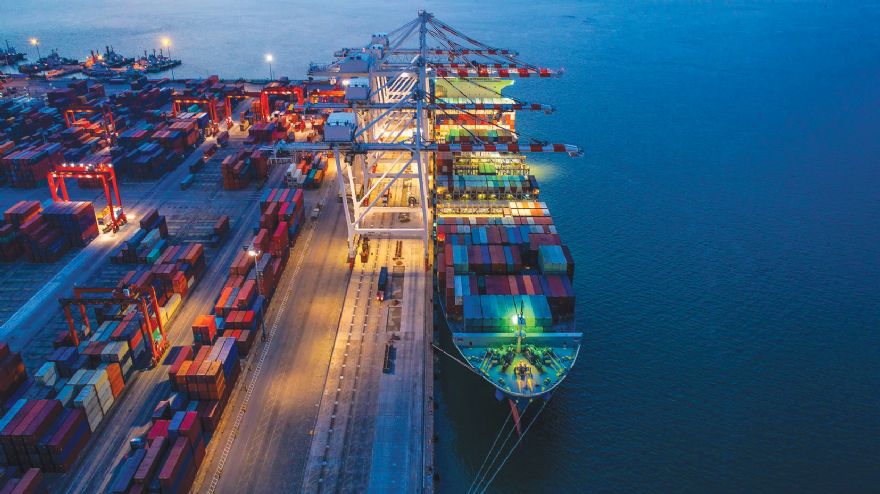 Manufacturers saw a further increase in new export business in July
Manufacturers saw a further increase in new export business in JulyThe UK manufacturing upturn remained solid in July. Although rates of expansion in output and new orders slowed, they remained among the best in the
IHS Markit/CIPS Purchasing Managers’ Index history amid robust sales to both domestic and export clients. Scarcities remained a prime concern, however, as stretched supply chains and staff shortages were constraints preventing faster growth of output and employment.
The seasonally adjusted survey posted 60.4 in July, down further from May’s record high of 65.6. — the PMI has signalled expansion for 14 months. Growth slowed across the consumer, intermediate and investment goods industries.
However, manufacturing production rose for the fourteenth consecutive month in July, as companies benefitted from increased new order intakes, rising client confidence and the re-opening of the economy. New business inflows reflected stronger demand from domestic and overseas markets.
There were also reports of clients bringing forward purchases to guard against supply chain issues. That said, rates of growth in both output and new work both eased to four-month lows.
Increase in new export businessJuly also saw a further increase in new export business. The investment goods sector saw by far the steepest increase. Companies reported improved demand from the USA, the European Union (EU), China, Russia and the Middle East, although some noted that Brexit issues constrained exports to the EU.
Scarcities, shortages and price rises remained prominent challenges faced by UK manufacturers during July. Raw material, staff and skill shortages were all major factors stymieing output growth and contributing to a further marked increase in input purchasing. Solid jobs growth continued, but the rate was insufficient to prevent a further increase in backlogs.
Logistic delays caused by stretched international supply chains meanwhile led to a further marked lengthening of supplier lead times during July. Raw material shortages, disruption caused by Covid-19 and Brexit and capacity issues across the distribution network (including delays
at ports, freight and shipping services) also contributed to delivery delays.
With demand outstripping supply, price pressures continued to grow during July. Average input costs rose at a near survey-record pace, with over 72% of manufacturers seeing an increase.
A vast array of items increased in cost, including chemicals, commodities, cardboard, electronics, food stuffs, metals, packaging and timber products. The pass-through of higher input costs led to a further substantial rise in output charges, which rose at a near-identical pace to June's series-record.
The outlook for the manufacturing sector remained on the upside in July, with 63% of companies forecasting output to rise over the coming year. Positive sentiment was linked to improving market conditions and reduced uncertainty surrounding both the post-Brexit and post-pandemic trading
environment.
Rob Dobson, director at IHS Markit, said: “Although July saw UK manufacturers report a further month of solid growth, scarcities of inputs, transport and labour are stifling many businesses.
“On one hand, manufacturers are benefiting from re-opening economies. This is leading to solid inflows of new work from both domestic and overseas markets, including the USA, the EU, China and the Middle East.
“On the other, the recent surge in global manufacturing growth has led to another month of near-record supply chain delays, exacerbated by factories and their customers building up safety stocks. Some firms also noted that post-Brexit issues were still a constraint on efforts to rebuild sales
and manage supply and distribution channels to the EU.
“Demand outstripping supply is also driving up prices. Input costs again rose at a near survey-record pace, leading to a near-record increase in manufacturers' selling prices. Amid growing indications that many supply chain disruptions and raw material shortages are unlikely to be fully resolved until 2022, the outlook remains one of constrained growth combined with high inflation for the foreseeable future.”
Supply gridlockDuncan Brock, group director at the Chartered Institute of Procurement & Supply, said: “Manufacturing in July was once again unable to maintain the pace of output growth seen earlier this year following the re-opening of the UK economy, as supply gridlock resulted in a moderate deceleration in the rates of expansion of production, new orders and job creation.
“A mismatch in global recovery rates following the pandemic meant some businesses abandoned their usual suppliers to seek new sources and avoid elevated lead times and the shortages gripping the sector. Disruption is a worldwide problem however, so there was likely to be limited success in re-modelling supply chains completely with the challenges too difficult to circumnavigate.
“As more and more supply chain managers chased fewer materials, three quarters of manufacturing companies paid higher prices as the weight of inflation bore down on an increasing number of input items. Firms were also in stronger pursuit of skilled labour as recruitment became more difficult with workers changing jobs, isolating or hesitating to return.”
Alastair Wilson, partner at MHA, a network of independent accountancy firms, said: “While benefitting from increased demand, manufacturers are now facing the challenge of substantially increased shipping costs, in addition to disruption from staff having to isolate due to the ‘pingdemic’.
“Staffing costs are also rising as demand for workers intensifies, leading to labour shortages in certain areas, such as in particular in the food manufacturing and automotive sectors, and greater powers for workers to demand pay increases. This is leading to higher production costs at the factory gate and price rises becoming more commonplace. However we would expect the buoyant results of recent PMI to continue over the next few months.”